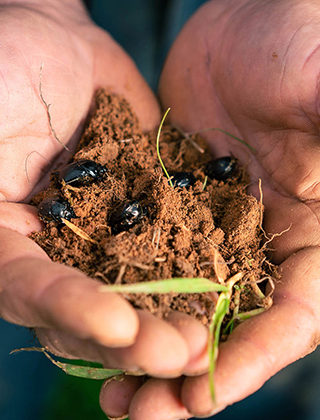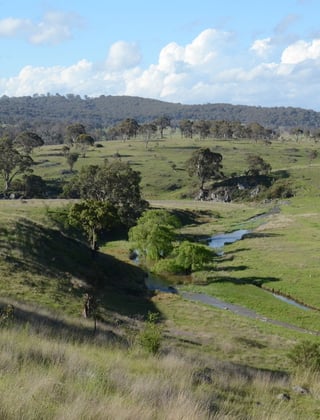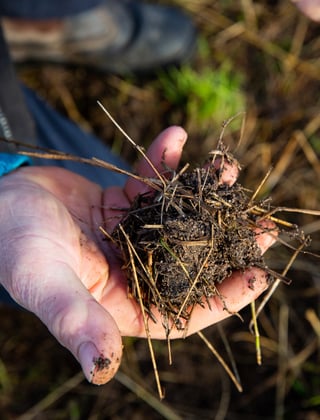Regenerative Techniques and Benefits
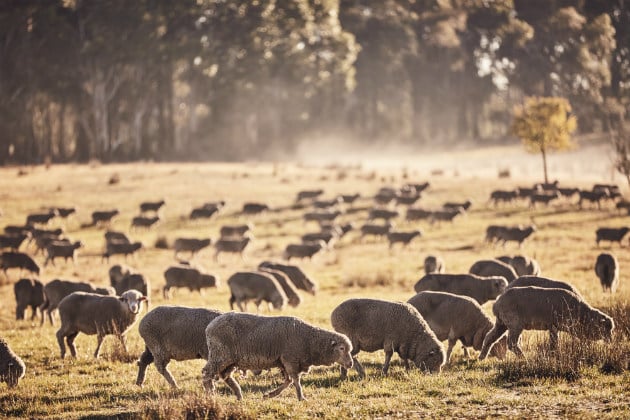
Regenerative agriculture techniques generally focus on the integrated management of soil, water, vegetation, biodiversity and livestock.
Many farmers have laudably undertaken natural resource management initiatives on their properties to make their landscapes more sustainable and there are a growing number of farmers who have gone one step further and embraced regenerative agriculture.
Regenerative agriculture is a system of farming which actively regenerates the current natural resource base.
Improving soil health is a key priority. Strong, healthy soils (structural and biological) with deep carbon levels retain water, support strong, nutrient rich plants, and promote biodiversity in soil microbes and plants. They also sequester greater amounts of carbon from the atmosphere, which helps combat climate change.
Regenerative agriculture works to:
support soil systems
increase biodiversity
encourage and support flora and fauna species co-habitation
improve water cycles
repair erosion and reduce and remove water pollution
support bio-sequestration
increase dry matter compost and soil structure to lock carbon back into soil
increase resilience to climate fluctuation
build resilience through ground cover and water storage
strengthen soil health and vitality
improve water retention, compost and pastures and tree root systems
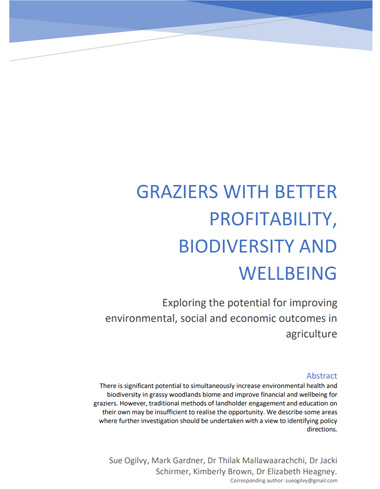
Graziers with better profitability, biodiversity and wellbeing
This survey, conducted by Vanguard Business Services, has found that regenerative graziers are often more profitable and have significantly higher than average wellbeing compared with other NSW farmers. These findings verify the claim that regenerative graziers are able to be profitable whilst maintaining and enhancing the biodiversity on their properties.
Regenerative Agriculture Techniques
IMPLEMENTING TIME- CONTROLLED PLANNED GRAZING

By dividing a property into smaller paddocks and rotationally grazing them, the short duration of grazing combined with a longer planned plant recovery period reduces overgrazing of the desirable species. The higher stock density can result in a more even over each paddock. Intestinal parasite cycles can be broken by rotational grazing.
SLOWING THE FLOW OF WATER ON THE PROPERTY

Constructing interventions in the landscape or waterways, such as ‘leaky weirs’, slows down the rate of runoff, especially after rain. This allows time for water to percolate into the soil layers and rehydrate the landscape. Also, sediment is deposited, gradually rebuilding eroded creek .
LIFTING AND MAINTAINING GROUND COVER

Good ground cover improves the water cycle of the land so that when it gets rain there’s very little run off. It also helps prevent moisture evaporation, further extending the growing . Permanent ground cover also protects the soils from wind and water erosion, while providing organic matter for the soil.
ANIMAL IMPACT AND AVOIDING OVERSTOCKING
Rather than dictating to the land what stock it has to carry, it is better to look after the land, evaluate what it has to offer and then attempt to stock it accordingly. Leaving enough grass the paddock and maintaining living roots enable the pasture to recover quickly. Living roots feed soil biology. The planned approach to grazing also allows for timely feed budgeting.
ENCOURAGING PERENNIAL NATIVE GRASSLANDS

Native grassland has diverse species (some have shallow roots, some deep ), with each playing a role in maintaining soil health. They have evolved to suit the soils and climate and are adept at surviving droughts and heavy rains. They also help crowd out weeds. Many of the native perennials can have high feed quality.
Test REDUCING CHEMICAL INPUTS
As well as being costly, synthetic fertilisers can have negative impacts on the natural biological life in the soil. Applying organic composts, fertilisers and bio-amendments can be a cost and effective management practise to improve soil health. Promoting biological activity of soils reduces the reliance on chemical inputs.
AVOIDING TILLAGE OF SOIL

As well as limiting chemical disturbance of the soil, limiting mechanical and physical disturbance of the soil helps improve the structure of the soil, including the aggregates and pores that allow water to infiltrate into the soil. Tillage can result in soil erosion.
UTILISING LIVESTOCK AS A FARM TOOL

Stock can be used, in effect, as the farm machinery such as to transfer nutrients off sheep camps, move seed through the farm and reduce weeds and intestinal worm infection. Stock density, the herd effect, and planned rest from grazing are as much tools as is a plough.
PASTURE CROPPING

Pasture cropping involves sowing crops into living perennial pastures and growing them in combination, so that the cropping and grazing benefit each . No ground cover vegetation is killed prior to sowing and no tilling occurs, which improves soil structure and fertility.
REVEGETATING THE LANDSCAPE

Supporting a diversity of vegetation, including trees, helps to moderate temperatures, provides habitat and shelter, builds resilience in the landscape (especially to extremes) so it is able to recover more quickly, and contributes to the long-term productivity of the land.
MANAGING WATERWAYS

Degraded waterways and banks can be improved by fencing off stock and implementing water reticulation for stock, alongside the establishment of a vegetated strip at least 10 metres wide with a mix of native trees, shrubs and grass. These can be appropriately grazed.






